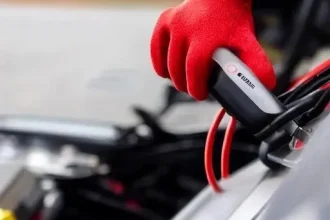In an era of unprecedented technological advancement, many aspects of our lives are undergoing dramatic transformations, and the automotive industry is certainly no exception. For decades, the notion of a car engine lasting beyond 150,000 miles felt like a distant dream, an achievement reserved for the most meticulous owners or the luckiest vehicles. Yet, as we stand in late 2025, that perception has been profoundly challenged, revealing an optimistic new reality for vehicle owners worldwide. Modern engineering, coupled with evolving maintenance practices, has dramatically rewritten the script on automotive longevity, empowering drivers to expect far more from their trusty machines.
The engine, often dubbed the “heart of your vehicle,” is a complex marvel of mechanics, tirelessly converting fuel into the kinetic energy that propels us forward. Historically, its lifespan was perceived as finite, with a typical car reaching its mechanical twilight around the 8-year or 150,000-mile mark. However, contemporary designs, innovative material science, and sophisticated manufacturing processes have collectively ushered in a golden age of durability. Today’s automotive marvels are engineering triumphs, meticulously designed not just for performance, but for an astonishing endurance that redefines traditional expectations of vehicle longevity, pushing the boundaries of what’s truly possible.
| Factor | Influence on Engine Lifespan | Average Expectations (Miles) |
|---|---|---|
| Maintenance & Service | Regular oil changes, fluid checks, filter replacements, and timely repairs are paramount. Neglect drastically shortens life. | With excellent maintenance: 250,000 ⎯ 500,000+ |
| Driving Habits | Smooth acceleration, gentle braking, and avoiding excessive idling or high-speed driving reduce strain. Aggressive driving accelerates wear. | Responsible driving: Extends life significantly |
| Vehicle Make & Model | Quality of manufacturing, engine design (e.g., timing chains vs. belts), and component durability vary by brand. | Varies widely (e.g., economy 150k-200k, luxury 150k-300k, diesel 200k-350k) |
| Operating Environment | Frequent short trips, extreme temperatures, dusty conditions, or heavy towing can increase wear. | Optimal conditions: Enhance longevity |
| Technological Advancements | Improved engine materials, lubrication technologies, and precision engineering contribute to extended durability. | Modern engines: Generally higher than older models |
For more detailed automotive care advice, visit AAA Auto Repair.
Proper maintenance is the undisputed champion in this quest for enduring automotive life. Experts universally agree that a rigorous maintenance schedule is the single most critical factor determining how long a car engine will last. Neglecting regular oil changes, for instance, is akin to denying your heart proper blood flow; the engine’s vital components will grind against each other, accumulating damaging friction and heat. Modern synthetic oils, incredibly effective at reducing wear, demand adherence to recommended intervals, typically every 5,000 to 7,500 miles. By integrating insights from advanced diagnostics and proactively addressing minor issues before they escalate, owners can significantly extend their engine’s operational lifespan, safeguarding their substantial investment for countless miles down the road.
Beyond meticulous servicing, how you interact with your vehicle fundamentally shapes its destiny. Aggressive driving — characterized by rapid accelerations, abrupt stops, and sustained high speeds — imposes immense stress on an engine’s intricate mechanisms. This strain accelerates wear and tear, potentially leading to premature component failure. Conversely, adopting a smoother, more measured driving style not only conserves fuel but also dramatically reduces the physical demands placed on the powertrain, allowing it to function within its optimal parameters for a longer duration. Imagine a finely tuned athlete: consistent, mindful training yields sustained performance, while reckless exertion leads to early burnout. Your car engine deserves the same consideration.
Industry leaders and manufacturers now confidently project far greater lifespans. A compelling 2023 article published in Forbes magazine suggested that with regular servicing and proper care, many modern car engines can now effortlessly exceed 250,000 miles – a remarkable leap far beyond the lifespan of engines built even a few decades ago. Some manufacturers, notably VAG (Volkswagen Audi Group), even anticipate their engines, apart from routine wear and tear, lasting an astonishing 300,000 to 500,000 miles. These figures, once considered mythical, are increasingly becoming a tangible reality for diligent car owners. The shift is not merely incremental; it represents a paradigm change, driven by superior engineering and a deeper understanding of automotive endurance.
The future for your car’s engine looks brighter than ever, promising unparalleled longevity and reliability. By embracing a proactive approach to maintenance, cultivating responsible driving habits, and leveraging the inherent durability of today’s meticulously engineered vehicles, you are not just extending your car’s life; you are maximizing its potential. Envisioning a future where 300,000 or even 500,000 miles is the norm, rather than the exception, empowers owners to truly invest in their vehicles, transforming them from mere modes of transport into enduring companions. Your car’s engine is ready for the long haul – are you ready to give it the care it deserves?




